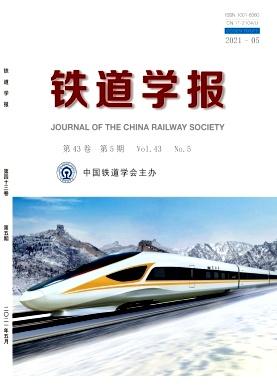深季节冻区涵洞热防护涂层的影响及优化设计
Q3 Engineering
引用次数: 0
摘要
在深季节冻结地区,涵洞改变了冻结过程。涵洞地基的最大季节冻结深度约为天然地基的2倍。为了缓解这种情况,通常采取在涵洞下铺设热防护涂层的措施。本文通过等效厚度换算法,比较了三种常用保温材料的优缺点。基于已有的哈大客运专线涵洞监测数据,建立了热防护涵洞温度场的有限元模拟模型。为了验证热防护涂层的效果,分别对不同位置、不同方式、不同厚度的热防护涂层进行了数值计算,了解不同条件对最大冻结深度的影响,得出涵洞基础的最佳敷设方案。结果表明,泡沫混凝土是热防护涂层的理想材料,应在试验涵洞基础顶部铺设38 cm厚的泡沫混凝土作为热防护涂层,其厚度应比基础宽10cm。这样可以减小涵洞下最大冻结深度,满足寒冷地区施工的需要。©2015,科学出版社。版权所有。本文章由计算机程序翻译,如有差异,请以英文原文为准。
Influence of Thermal-protective Coating on the Culvert in Deep Seasonally Frozen Region and Its Optimized Design
In deep seasonally frozen region, the culvert changed the freezing process. The maximum depth of seasonal freezing in culvert foundation was about 2 times deeper than that in natural ground. In order to ease the situation, the measure of laying thermal-protective coating under the culvert is usually taken as a solution. In this paper, the advantages and disadvantages of three kinds of commonly used insulation materials were compared through the equivalent thickness conversion method. Based on the existing monitoring data of the culverts in Harbin to Dalian passenger dedicated line, a finite element model was established to simulate the temperature fields of the culverts with thermal-protective coating. To verify the effect of the thermal-protective coating, a numerical calculation was conducted respectively on different locations, modes and thickness of the thermal-protective coating to understand the influence of different conditions on the maximum frozen depth and to obtain the optimal laying scheme for culvert foundation. The results indicated that foam concrete is the ideal material for the thermal-protective coating, and the 38-cm-thick foam concrete should be laid on the top of the experimental culvert foundation as thermal-protective coating, which should be 10cm broader than the foundation. In this way, the maximum freezing depth under the culvert could be reduced, to meet the needs of construction in the cold region. © 2015, Science Press. All right reserved.
求助全文
通过发布文献求助,成功后即可免费获取论文全文。
去求助
来源期刊

铁道学报
Engineering-Mechanical Engineering
CiteScore
2.00
自引率
0.00%
发文量
6728
期刊介绍:
Journal of the China Railway Society is a comprehensive academic journal sponsored by the China Railway Society (founded in 1979, changed from bimonthly to monthly in 2011, and distributed domestically and internationally). The journal aims to comprehensively reflect the latest research progress in railway science and technology, expand the exchange and dissemination of independent original innovation results, and serve to promote the development of disciplines and the progress of railway science and technology. It mainly publishes academic papers and reviews on railway transportation, railway locomotives and rolling stock, electrification, railway communication and signaling, informatization, railway engineering and other disciplines, and pays attention to the scientificity and creativity of the papers. It is suitable for scientific and technological personnel, management experts and leading cadres engaged in and concerned with the rail transportation industry to read and refer to.
 求助内容:
求助内容: 应助结果提醒方式:
应助结果提醒方式:


